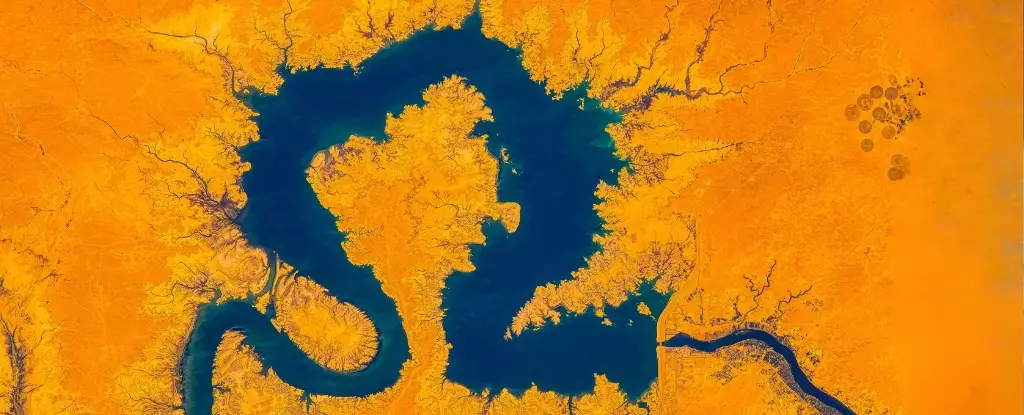Human activity, often perceived as peripheral or temporary, has insidiously woven itself into the very fabric of Earth’s natural systems. The recent revelations about how dam-building and water management influence our planet’s magnetic poles and rotational mechanics underscore a disturbing truth: we are fundamentally altering Earth’s core dynamics and surface behavior, often without full comprehension or consideration of the broader consequences. The notion that concrete dams and reservoirs could shift the Earth’s axis and magnetic North challenges traditional views that see human intervention as merely superficial or localized.
This realization invokes an unsettling perspective—our infrastructural decisions are not isolated acts of engineering; they are actings that reverberate through Earth’s deep geophysical processes. The sheer capacity of humanity to manipulate water storage on an unprecedented scale introduces a visible yet underappreciated dimension of planetary boundary-breaking. As large reservoirs redistribute mass, they do more than influence local water levels—they exert a global influence on Earth’s core orientation and magnetic field configuration. This shows an urgent need to reframe our approach to environmental stewardship. Instead of viewing dams as solely developmental milestones, we should recognize them as potent forces capable of nudging Earth’s natural balance into new, unpredictable states.
Why We Should Feel Responsible for Our Planet’s Subtle Shifts
The evidence that dam-induced mass redistribution has shifted the Earth’s rotation axis by roughly a meter highlights how human endeavors subtly tether ourselves to planetary systems. Such shifts may seem negligible on a day-to-day scale, but they carry implications that ripple far into Earth’s climate and geodynamics. The change in the Earth’s magnetic pole position, as detailed by Valencic and colleagues, isn’t just a scientific curiosity—it signals that our built environment is influencing foundational planetary processes. This should give us pause.
A compelling argument exists that we must acknowledge our role in these large-scale phenomena—not as helpless spectators but as active participants with responsibility. The slowing of Earth’s rotation, the reduction of sea levels due to water trapping, and even the misplacement of the magnetic north pole are intertwined with our infrastructure choices. Forcing mass into reservoirs might be rationalized as a means toward human development and energy security, but it simultaneously exemplifies how our pursuit of progress can have unforeseen planetary costs. The fact that we’ve already accounted for a quarter of the century’s sea level fall through damming emphasizes the tangible power of our interventions.
This perspective should foster a shift from dismissing these effects as coincidence to recognizing them as institutional signals of our profound influence. Our decisions about water management do not occur in a vacuum—they ripple through Earth’s core and magnetic dynamics, potentially destabilizing processes that have been stable for millennia. It’s high time we treat these mechanisms with the responsibility they demand, understanding that engineering solutions can come with powerful, unintended side effects.
Reevaluating Our Impact: Beyond Climate Change and Into the Planet’s Heart
What makes these findings particularly alarming is their implication for future climate and planetary stability. While efforts to combat climate change often focus on greenhouse gases and fossil fuel reductions, the profound impact of human water management has flown under the radar. The redistribution of water mass by dams may serve as a temporary brake against some effects of rising sea levels, but it simultaneously exacerbates other systemic shifts that threaten to destabilize Earth’s magnetic field and rotational stability.
The delicate interplay between Earth’s surface and core is less resilient than many realize. By manipulating water distribution on a grand scale, humans are inadvertently wielding the power to alter the planet’s very rhythms. The shifting magnetic poles, which influence navigation, animal migration, and even Earth’s protective magnetic shield, are not isolated phenomena—they are intertwined with our infrastructural footprint.
One of the critical lessons here is humility. Human engineering might appear as mastery over nature, but it could conversely become a catalyst for destabilization. We must confront the uncomfortable reality that our pursuit of development—be it for electricity, agriculture, or urban expansion—can have far-reaching, irreversible consequences. Reassessing our priorities and respecting the planet’s inherent stability are essential steps toward fostering a truly sustainable coexistence.
In the end, what these revelations suggest is a sobering truth: we are not separate from Earth’s natural processes; we are components of an intricate, interconnected system. Recognizing our influence, no matter how well-intentioned, is fundamental to shaping policies and actions that do not just benefit humanity temporarily but preserve the planet’s long-term integrity.


Leave a Reply